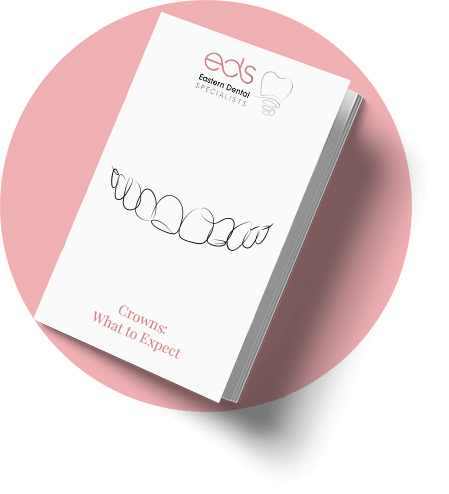A crown is a full or partial covering over a tooth. It is usually recommended for teeth that are heavily filled, and/or have fractured, resulting in tooth structure loss. It is usually to protect a tooth from risks of further fracture and restore adequate function and aesthetics. A crown can be made from gold alloy, base metals, porcelain with a metal substructure, or full porcelain.
Often a crown is recommended because there has been significant tooth structure loss due to large/multiple fillings, tooth or filling fracture and/or large decay resulting in a decreased amount of remaining tooth. A crown is recommended to restore the tooth to adequately function and also give a longer life - span than with another larger filling.
Continuing to fill the tooth may result in fracture that is too large or too deep to fill again or even do a crown on later, thus resulting in the tooth needing to either be extracted or have adjunctive therapies such as root canal treatment. Crowns can be made from metal gold alloy, base metals, porcelain with a metal substructure or porcelain. Often your prosthodontist will determine which would be the best option for your particular tooth.
Download our Crowns: "what to expect?" Guide
Download
Dental veneers are thin shells of tooth - colored material, typically made from porcelain or composite resin, that are placed over the front surface of teeth to improve their appearance. They are often used to address a variety of cosmetic dental concerns, including:
1. Aesthetic Improvements
2. Materials
Veneers offer a great solution for those looking to enhance their smile, but it's important to consult with the prosthodontist to determine if they're the right option based on your oral health and cosmetic goals.
Resin bonded or resin retained bridges are minimally invasive fixed prostheses that are designed to replace a missing tooth. These type of bridges which rely on composite resin cements for retention.
The main advantage of resin bonded bridges is that, in comparison to conventional bridge preparations, they are conservative of tooth structure. By using a resin bonded bridge it is possible to provide a fixed replacement for missing teeth that could be reversible and does not compromise the teeth next to the space.
A resin bonded bridge is usually made from porcelain with a metal wing that attaches to the back of the tooth next to it (abutment tooth) or it can be made from full ceramic.
Often patients have a tooth missing that they would like to consider a fixed option rather than something removable. Sometimes because of lack of bone, an implant may not be feasible especially in the front of the jaws or where there have been significant bone loss due to pathology. Sometimes to cost of an implant may be too high.
This option is used for younger patients that are missing adult teeth (especially after orthodontic treatment). They may like a fixed option until they are old enough for an implant. A resin bonded bridge can be highly effective in replacing missing teeth, restoring oral function and aesthetics and result in high levels of patient satisfaction. They represent a minimally invasive, cost effective and long lasting treatment modality for replacement of missing teeth. Usually the teeth that are replaced are teeth that experience a lower level of loading as this type of bridge is a cantilevered design - such as the lateral incisors, lower incisors and some premolar teeth. It is not common to replace molar teeth with resin bonded bridges as they experience a much higher level of loading during function.
Download our Resin Bonded Bridges: "what to expect?" Guide
Download


Appointment by request